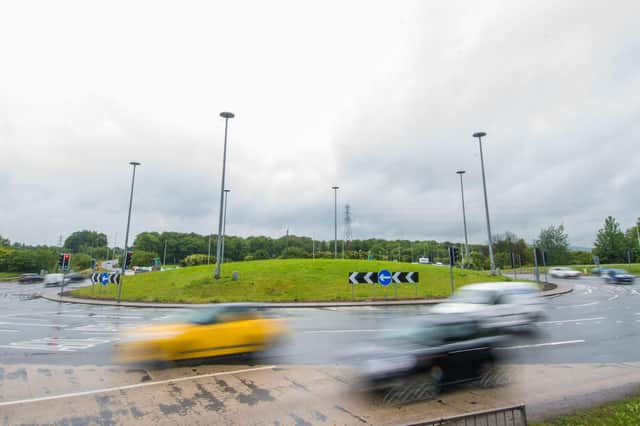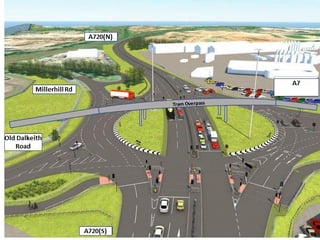‘Glasburgh’ residents are in need of connectivity - David Alexander comment


The only junction on the bypass served by a roundabout rather than a flyover, one wonders why this ever came about in the first place, given it is here that the A720 meets the A7, which in one direction takes traffic to the Borders and in the other to the ERI “super hospital” (which one assumes had already been earmarked at the time the A720 was under construction) as well as Sheriffhall Park and Ride.
In addition, the roundabout is also connected to a busy local route to Dalkeith and a further road serving local tourist/leisure attractions.
Advertisement
Hide AdAdvertisement
Hide AdStill, better late than never, and last December Transport Scotland published details of the preferred option for a flyover scheme. This will be funded as part of the Edinburgh and South-East Scotland City Region Deal. But fast-forward a few months and the project has been put in doubt – or at least risks being seriously delayed – after the Scottish Government agreed to “review” the plans in exchange for Green Party support for its Budget.
Why people who call themselves “green” would want to obstruct a plan that puts an end to long queues of motor vehicles, spewing out additional emissions, is beyond me; but there you are.
Yet even with the constrictions caused by the current bottleneck at Sheriffhall, the Edinburgh city bypass has contributed enormously to improved traffic flow not just around the capital but – linked with improvements to the M8 and its connection to the M74 extension through south-east Glasgow – across the entire Central Belt.
Added to this is the decision to expand and “integrate” local east/west rail services, which has effectively abandoned the traditional “travel to work” areas based on Glasgow and Edinburgh. I know personally of people who live in East Lothian and commute daily to Glasgow and I’ve no doubt there are those who travel to a workplace in Edinburgh from homes in the likes of Helensburgh and Milngavie.
Glasburgh
Green belt restrictions have also led to major housing developments being created some distance from but, to some extent connected to, both of the major cities. What seems to be emerging is a Central Scotland “megatropolis” – let’s call it, for want of a better word, “Glasburgh”.
One example of how this affects a locality is provided by the former mining towns of Midlothian, located just south of Edinburgh. No offence to Midlothian, but much of the target market is actually focused on the booming economy of the capital, where house-building land is scarce and at a premium.
So while the green belt has ensured the continuation of a non-concrete half-circle around west, south and south-east Edinburgh, it has not prevented urban sprawl. Moral: families are demanding a choice that includes affordable houses with gardens and not one restricted to Marchmont-type flats.
However, peripheral housing developments can have their advantages. With the rise in employment related to, say, financial services, many of today’s two-working households have a dilemma whereby one is employed in Edinburgh and the other in Glasgow, leading to disputes as to who should undergo the longer commute.
Advertisement
Hide AdAdvertisement
Hide AdGiven the M8 and its more recent connections, plus major enhancements to local rail services, settling in West Lothian provides a resolution as this location enables an acceptable travel time to either city. A Central Scotland megatropolis might not be to the liking of everyone, but that seems to be the way things are going.
Therefore given the extent of the area (the distance by road/rail from Helensburgh to North Berwick is approximately 85 miles) the population must be offered seamless connectivity between housing and employment. Which is why the proposals for a Sheriffhall flyover must be put into practice – and as quickly as possible.
David Alexander is MD of DJ Alexander.
A message from the Editor:
Thank you for reading this story on our website. While I have your attention, I also have an important request to make of you.With the coronavirus lockdown having a major impact on many of our advertisers - and consequently the revenue we receive - we are more reliant than ever on you taking out a digital subscription.Subscribe to scotsman.com and enjoy unlimited access to Scottish news and information online and on our app. With a digital subscription, you can read more than five articles, see fewer ads, enjoy faster load times, and get access to exclusive newsletters and content. Visit www.scotsman.com/subscriptions now to sign up.
Our journalism costs money and we rely on advertising, print and digital revenues to help to support them. By supporting us, we are able to support you in providing trusted, fact-checked content for this website.
Frank O'Donnell
Editorial Director
